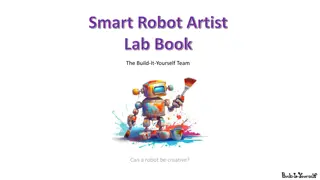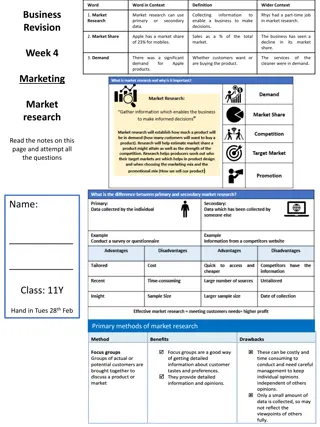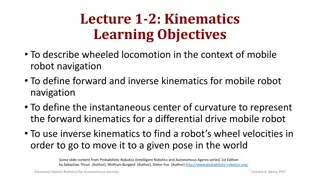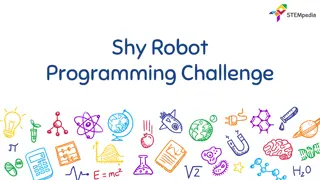
Global Collaborative Robot (Cobot) Market: Thriving Research Methodology
The Global Collaborative Robot Market is experiencing remarkable growth, and this article delves into its key trends, drivers, and potential for the future.
Uploaded on | 4 Views
Download Presentation

Please find below an Image/Link to download the presentation.
The content on the website is provided AS IS for your information and personal use only. It may not be sold, licensed, or shared on other websites without obtaining consent from the author. If you encounter any issues during the download, it is possible that the publisher has removed the file from their server.
You are allowed to download the files provided on this website for personal or commercial use, subject to the condition that they are used lawfully. All files are the property of their respective owners.
The content on the website is provided AS IS for your information and personal use only. It may not be sold, licensed, or shared on other websites without obtaining consent from the author.
E N D
Presentation Transcript
Global Collaborative Robot (Cobot) Market: Thriving Research Methodology by BIS Research Collaborative Robots, commonly known as Cobots, have emerged as a game-changer in the field of robotics, revolutionizing the way humans and machines work together. These intelligent machines are designed to collaborate with human operators in a shared workspace, offering increased flexibility, safety, and efficiency in various industries. The Global Collaborative Robot Market is experiencing remarkable growth, and this article delves into its key trends, drivers, and potential for the future. Market Overview The Collaborative Robot Market has witnessed exponential growth over the years, driven by the need for automation solutions that can work alongside humans. The ability of cobots to perform repetitive tasks, handle heavy payloads, and adapt to dynamic environments has captured the attention of a wide range of industries. From manufacturing and logistics to healthcare and retail, cobots are transforming workflows and unlocking new possibilities. Key Market Research Drivers and Insights Demand for Operational Efficiency: Cobots streamline processes and enhance throughput. They reduce errors, optimizing operations for higher output. Focus on Worker Safety: Cobots are designed to work safely alongside humans. They help reduce the risk of workplace accidents. Ergonomic Considerations: Cobots address ergonomic concerns in the workplace. They contribute to a safer and more comfortable working environment.
Request an Updated Version of this Article to access the most recent market insights, including updated market size, emerging applications, and technological advancements as of 2024. Diverse Industry Applications and Technological Advancements Diverse Applications: Manufacturing: Cobots assist in assembly, pick-and-place, quality control, and machine tending. Logistics: They support warehouse operations, order fulfilment, and inventory management. Healthcare: Cobots aid in patient care, surgical procedures, and laboratory automation. Emerging Use Cases: As technology evolves, new applications continue to emerge, demonstrating the versatility of cobots. Role of Technological Advancements: Advanced Sensors and Vision Systems: Cobots are equipped with sensors and vision systems for perceiving and interacting with their environment. Machine Learning Algorithms: These algorithms enable cobots to learn and adapt to different tasks and scenarios. Integration of AI and IoT: Cobots leverage AI and IoT capabilities for real-time data analysis, predictive maintenance, and seamless connectivity. Enhanced Functionality: These technological advancements enhance the functionality of cobots, making them more versatile and efficient in various industries. Key Market Players ABB Ltd. Fanuc Corporation Kuka AG Denso Robotics, Inc. Seiko Epson Corporation AUBO Robotics Nachi Robotic Systems, Inc. Bosch Rexroth AG Precise Automation, Inc. Productive Robotics, Inc. Techman Robot, Inc. Yaskawa Motoman Future Market Opportunities The future of the Global Collaborative Robot Industry holds immense potential. As technology advances and cobots become more intelligent and capable, they will continue to transform robotics and automation industries and create new opportunities. The integration of cobots with emerging technologies like 5G connectivity, augmented reality (AR), and virtual reality (VR) will unlock even greater possibilities, enabling remote collaboration, enhanced training, and improved human-machine interaction.






















